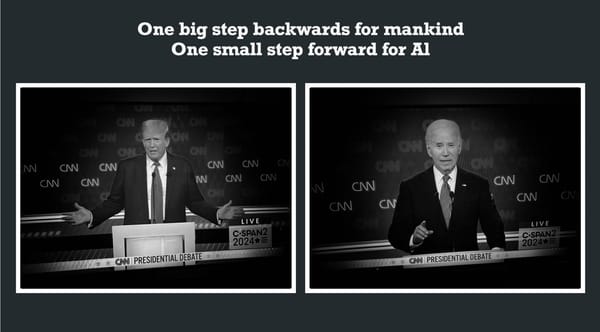Photographing Duran Duran nearly ended in spilled blood and broken bones, battling over copyright.
My journey to build Sendergram a blockchain solution to help creative professionals make copyright infringement harder and easier to… My journey to build Sendergram.com a blockchain solution to help creative professionals make copyright infringement harder began innocently enough with an assignment
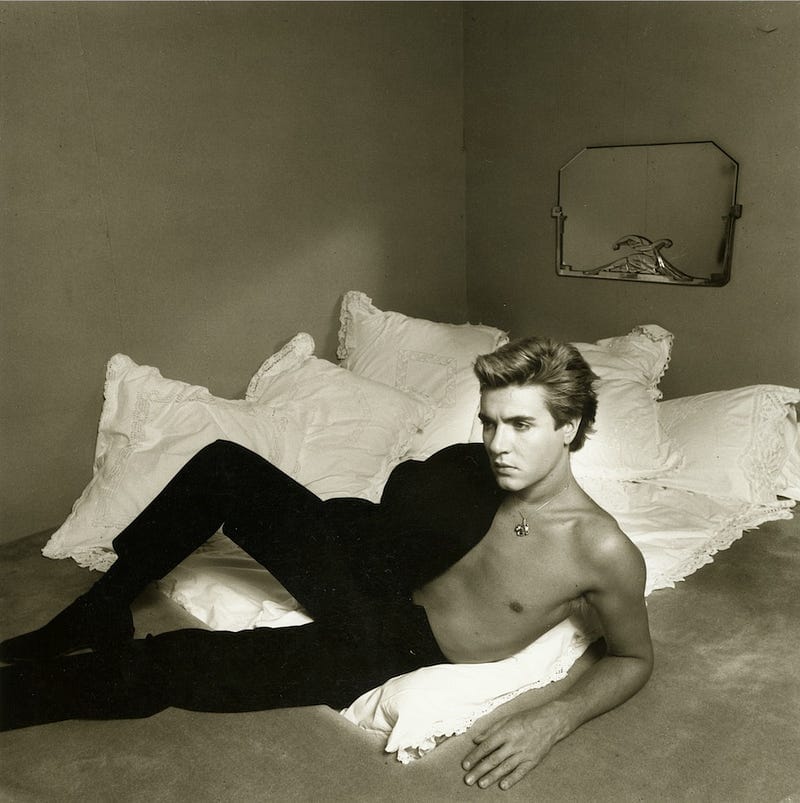
Photographing Duran Duran nearly ended in spilt blood and broken bones, battling over copyright.
My journey to build a blockchain solution to help creative professionals make copyright infringement harder and easier to defend began innocently enough with an assignment to photograph Simon Le Bon, lead singer of Duran Duran, in 1983. As a young photographer, it was the first time one of my images was worth more than the cost of an Indian takeaway and a pint of beer. It should have been a moment of triumph. Instead, it ended badly. Very badly. The band’s representatives wanted me to sign over the copyright. When I refused they told me that “blood would be spilt” if I sold the pictures. A contract would be put out on me. My fingers would be broken. And for the next ten years, I had better be watching behind me. Ironically, everybody loved the images.
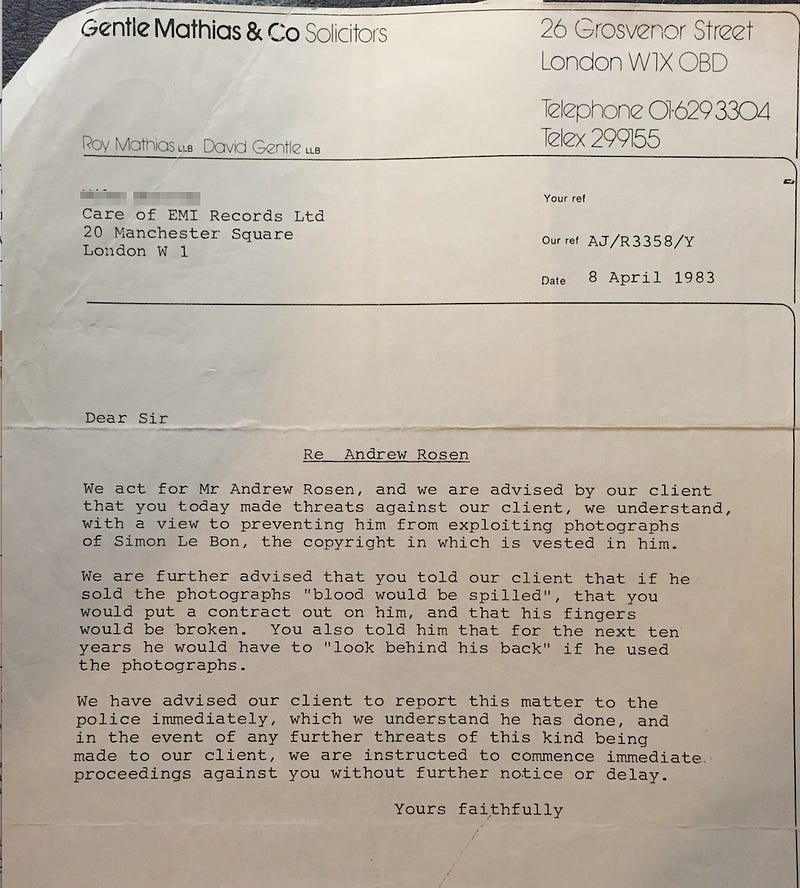
I never forgot my chilling experience with Duran Duran and the ugly dispute over copyright ownership. Years later I transitioned from photography to become a software developer, and I am now launching FileProtected.com, with co-founders Björn Graf and Peggy Steevensz to help protect creative professionals. It enables and certifies the creative process, it creates trust between parties, reduces misunderstandings and disputes, and helps defend copyright infringement. If I had FileProtected.com back when I photographed Duran Duran, I could have avoided all the drama — and no bones would have needed to be broken. Here’s how it all went horribly wrong . . .
Sign up for a FREE early access account for FileProtected.com https://www.fileprotected.com/account/sign-up?r=token&v=O5nrcR1vLt8qPyJ8
Johnny Rotten, Paul Weller, Siouxsie Sioux, London 1980
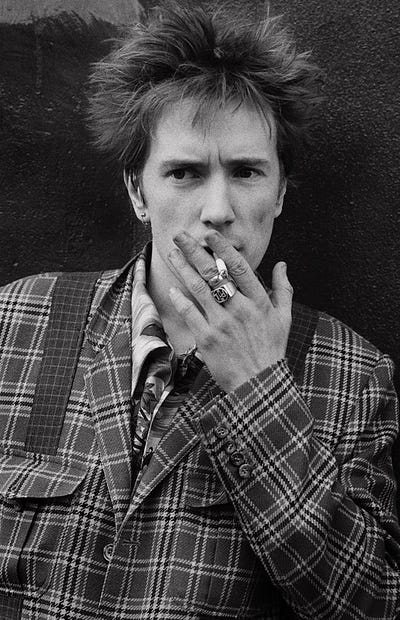

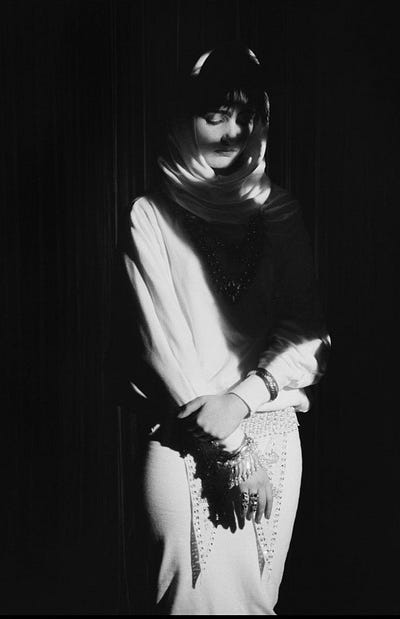
Specimen, Steven Linnard, Boy George & Steve Strange,
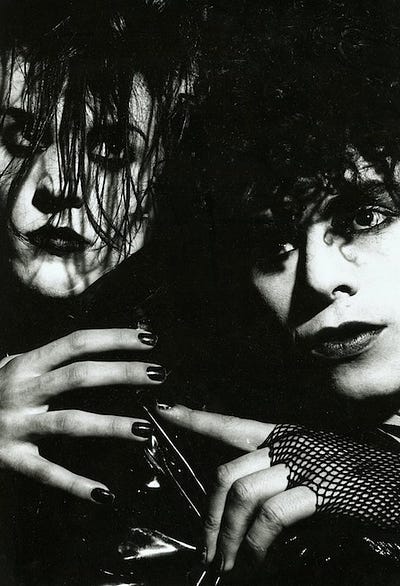
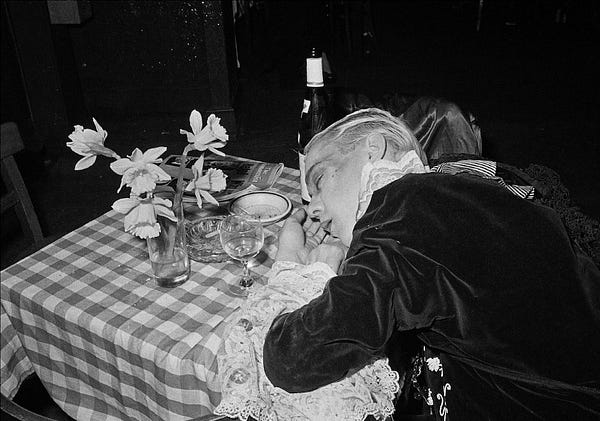

“Blood will be spilt”
It was 1983. Punk had been over for a few years. A softer, more effeminate and frilly scene had crept in. Bands like Duran Duran, Spandau Ballet, Heaven 17, and Depeche Mode now pranced around like peacocks. Bands I had worked with like The Clash, Sex Pistols, The Jam and Siouxsie and the Banshees looked on in horror. The press called these newcomers The New Romantics.
I had been working as a photographer in London, England, for a few years, first as an assistant to Pat Booth, a 60’s model-turned-photographer, then as a staff photographer for Record Mirror and Sounds. I freelanced for many other publications, including The Face magazine, Blitz, Smash Hits as well as all the major record companies. Life was good; I just didn’t know it at the time. I had plenty of work and compared to most of my mates who were on the dole [social security] I was living the life. I wasn’t rolling in cash, but I had enough to put gas in my orange Mini Clubman, eat greasy takeaways a few times a week, and buy a round of beer in the Hawley Arms, now a tourist destination because Amy Winehouse was once the barmaid in Camden, North London.



The first time I made some real money (like enough-to-buy-a-new-car money) happened by chance. I was working for the decidedly upscale Ritz Newspaper, which profiled the London fashion and high society scene. Ritz magazine, owned by David Litchfield and the iconic 60’s photographer David Bailey, was the British version of Andy Warhol’s Interview magazine. As a staff photographer, I had incredible access to most fashion and society gatherings. Ritz never paid me. The deal was that I owned the copyright to my photographs and could sell them with one condition: the images had to first appear in Ritz. It was a good deal for everyone. I gained access to inaccessible celebrities, and Ritz got free photos. I just had to find somebody else to pay me for second rights.
At the time I was living a post-punk lifestyle in Castle Road in Camden, a row of dilapidated terraced houses. If you have seen the “Young Ones,” a TV sitcom from that era, Castle Road was exactly that, hippy and all. My life was a study in contrasts. When I was wasn’t photographing bands I was photographing high society gone wild.
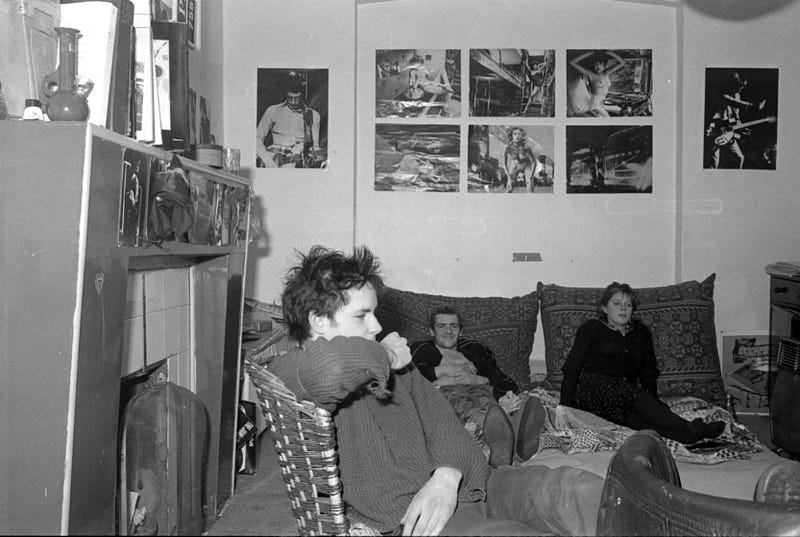
Sexy Simon
One day, making my rounds I walked into the Ritz office to deliver some photos. “Know any of these wannabes?” David Litchfield screamed across the room at me. He threw me a stack of PR photos of bands trying to get coverage. Ritz hardly reported on the music scene directly — it seemed beneath them. The closest they came was paparazzi shots of 60’s icons like Jagger and Bowie drunk at Langan’s Brasserie. I had been chipping away at David for months to let me cover the music scene, but he had no interest. All I ever heard was how great the 60’s were and how crap the music was now. But this day was different. For the first time, David was thinking of doing a spread on a band. He asked me to choose a contender from the stack of band PR requests that had been piling up. It was a no-brainer. When I saw the letter and press pack (no email back then) from EMI asking if Ritz was interested in doing a spread on Simon Le Bon, I couldn’t believe it. Duran Duran was huge at that moment. The spin doctors were calling them bigger than the Beatles — sheer hype, but the media lapped it up.
Timing is everything. Duran Duran had been in seclusion for the previous year, and nobody had any recent images. I knew the resale demand would be huge. I told David we had to profile Simon Le Bon. I told him: “If you stick him on the cover sales will go off through the roof. Double the print run.” He didn’t take my advice, but he later wished he had.
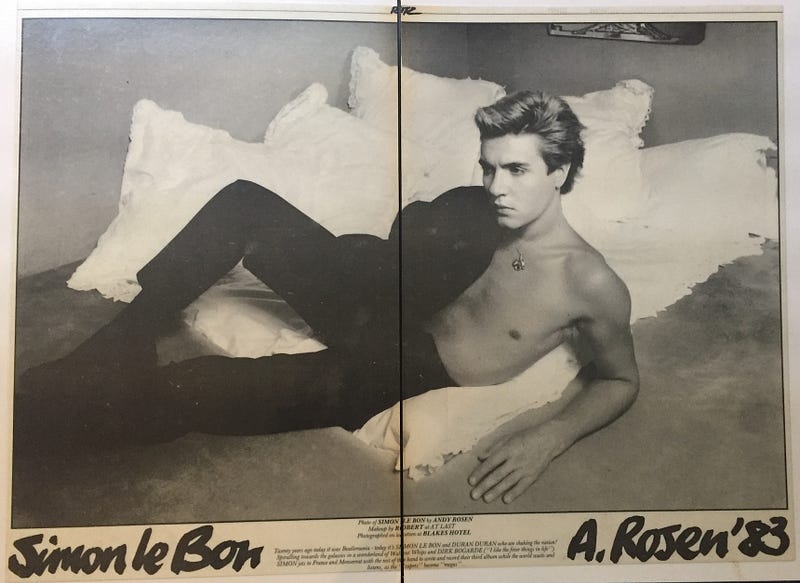
I pulled out all the stops for the shoot. I managed to blag a free room at Blakes Hotel: one of the trendiest and coolest pioneers in the small boutique hotel trend. Each room was different. I opted for one with the sunken bed. I had plans for sexy Simon.
Duran Duran frontman Simon Le Bon and band-mate Nick Rhodes turned up on time with two starstruck girls from their record company PR department. I planned to get Simon to take off his shirt and have him pose bare-chested, seductively pouting at the camera. This was in direct contrast with my usual hard, gritty punk style portraits of Johnny Rotten or Paul Weller. The New Romantics were in, and I was happy to have a whole new scene and set of characters to photograph. Punk was incredible, but in the end, it became repetitive and predictable. After 90 minutes of hair and makeup, Simon was spotless, posing seductively on the sunken bed. For Nick, I did a portrait of him and his reflection in an art deco mirror. The shoot went smoothly. Both Simon and Nick were very professional and easy to work with. After they all left, I jumped up and down on the sunken bed in excitement, hurriedly packed up my gear, and raced to get my film to the lab.
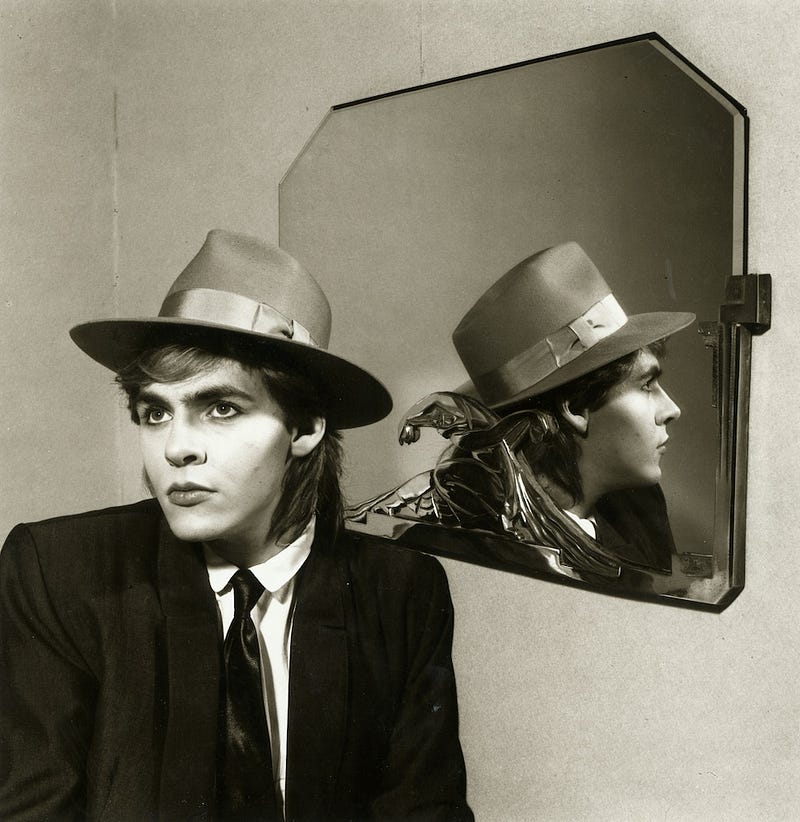
In the days before digital, there was always that nervous time between taking the photos and getting the film back from the lab. Until you had the negs in your hands, it was like the Titanic: anything could happen, and it often did — wrong exposure, no film in the camera, processing mistakes . . . It was always nerve-wracking thinking of the countless ways in which things could go wrong. In this case, all was good. In the lab, with negs finally, in hand I grabbed the loupe and hurriedly checked my images on the lightbox. I had nailed it. In my image, Simon Le Bon looked like a bit like a young Elvis. He certainly looked better than he did in real-life. Next stop, Fleet Street and Britain’s national newspapers, to make a deal for secondary publication rights after Ritz had published.
I had sold images before to Fleet Street and knew all the picture editors. The national papers like the Mirror, Mail, Sun and News of The World had the biggest budgets for photos in those days. My first stop was the Daily Mirror, and it proved to be my only stop. I negotiated a £1,000 fee for a one-time use with one important condition: it could only be published after Ritz Newspaper had published it, a week later. The picture editor agreed. But when I asked for our agreement in writing he laughed, saying: “We are a national newspaper — you can trust us.” A clear dig at Ritz Newspaper. Call me naive, but I trusted him. If only I’d had FileProtected.com back then. You might reasonably ask why I didn’t wait until after Ritz had published before giving the image to the Mirror? Back then the lead time for getting stories in Ritz Newspaper and other publications was often weeks in advance and months for the big magazines. I wanted to have a guaranteed sale locked in, just in case, Duran Duran decided to do another photoshoot elsewhere before my images appeared in Ritz.
The next morning I was up bright and early. I made my way to the corner shop on Castle Road to grab a pint of milk for my cereal. Casually glancing at the row of daily newspapers, I jumped out of my skin. On the front page of the Daily Mirror was my photo of Simon Le Bon. “Sexy Simon” was the headline. I was shocked. The image looked great, and under normal circumstances, I would have been jumping with joy. Instead, I knew I was going to get an avalanche of crap over this. I should never have trusted the Mirror. I should have got the deal in writing. Too late now.
The Big Breakup
My pager began bleeping. Two messages. David Litchfield at Ritz Newspaper and one of the EMI’s PRs, who was near to tears. “How could you do this to me?” she cried. “This is the biggest band in the world! They’re bigger than the Beatles!” No, they weren’t. “You will never work again!” she raged. “You need to come to the office right now and give all the images to EMI! EMI owns the copyright!”
As I made my way to EMI’s office, my head was spinning. My first big break and pay-day were turning into a train wreck. I was about to fall out with EMI, the biggest record company in the world; Duran Duran, the biggest band in the world; Ritz, the elite fashion and society publication; and the Daily Mirror, a national newspaper.
As I walked into the 2 p.m. meeting at EMI the band’s representative sprang violently towards me and snatched the photos out of my hand. No “Hello,” no niceties, no nothing. The PR cowered in the corner. I knew right then this was not going to have a frilly New Romantic ending. Recoiling, I told the band’s rep that he could keep the images he had grabbed as they were just contact sheets, not negs. He explained that while they loved the photo of Simon, and it was one of the best they had seen, they had to own it — and I had to sign over the rights. I wanted to tell him where to shove it, but instead, I tried to calm the situation. I politely told him that as the photographer I owned the copyright to the images, but to sort this out I would let them buy out the session for a reasonable price — less than what I could get on the open market. This was a very fair offer and not an uncommon way to resolve a situation like this, but my suggestion seemed to anger him even more. He launched into a tirade insisting that he owned the copyright to the session, and ordering me to hand over the negatives. If I didn’t, he would make sure I would never work again for EMI or for anyone in the music business. He added, in no uncertain terms, that if I sold the pictures then I should expect dire consequences: blood would be spilt, a contract would be put out on me, my fingers would be broken, and for the next ten years I would have to look behind me. I hightailed it out of there, not scared, but angry.

Next was Ritz Newspaper. No threats on my life there, thankfully. The fashion world had a little more class. But David told me in no uncertain terms that unless I signed over the rights, I would never work for Ritz Newspaper again. I tried to explain how I had been ripped off by the Mirror, but it had no effect. I understood why he was angry. I left the office with my negs, and disillusioned made my way home.
The next day on the advice of an attorney I went to Holborn Police Station to file a report that I had been threatened by representatives of Duran Duran. At first, the pimply young PC at the front desk thought I was taking the piss. When I pushed him he told me that there was not much the police could do unless somebody actually hurt me. I thanked him for his concern and told him to just document my complaint so if I was attacked or killed at least there would be a bloody paper trail.
A Royal Mess
Although I clearly owned the copyright, all parties disputed it. There was nothing in writing. It all got very messy. EMI sent threatening legal letters to Ritz Newspaper; Ritz sent legal letters me and to The Daily Mirror. Ritz claimed they owned the copyright and consequently the Mirror refused to pay me. I had to hire a lawyer just to get paid. My lawyers sent letters to Duran Duran’s management informing them that if anything happened to me, or if they made any more threats, we would commence immediately with legal proceedings. The Mirror did eventually pay me, but only after I had racked up considerable legal fees.
But the fun and games were far from over. A few weeks later the Daily Mirror had the audacity to publish my image of Simon again in the Sunday papers without permission. It took another letter from my lawyer for them to admit fault, and they paid me another £500 for the pleasure.
The Icing On The Cake
Looking back I can laugh now, but at the time it was not funny. It was a horrendous experience and a mistake I never made again. Ultimately I did make good money from that photo shoot, and the images still sell today through stock agencies. The icing on the cake is that the copyright dispute over my Simon Le Bon images led me to think how other creatives — photographers, videographers, cinematographers, artists, graphic designers — could protect their own copyright, leading me to develop FileProtected.com.
Sign up for a FREE early access account for FileProtected.com https://www.fileprotected.com/account/sign-up?r=token&v=O5nrcR1vLt8qPyJ8
Epilogue
Years later I owned a video production company called The Underground. We produced videos for the likes of Marilyn Manson, Red Hot Chili Peppers, Dr Dre, David Bowie, Tool, Orbital, Shania Twain, Ozzy Osbourne, Metallica, The Crystal Method, Dave Matthews Band, Van Halen, Metallica and Tricky. We also produced the Duran Duran music video, ‘Out Of My Mind,’ directed by Dean Karr and many other videos for EMI. The Underground also had a record label, Underground Media, in collaboration with Virgin Records, owned and controlled by EMI. I was friendly with the Chairman of EMI and good friends with Nancy Berry, former Vice Chairman, Virgin Music Group worldwide. Interestingly Nancy is now an accomplished fine art photographer/visual artist. So much for the threat that I would never work again for EMI or in the music business!





